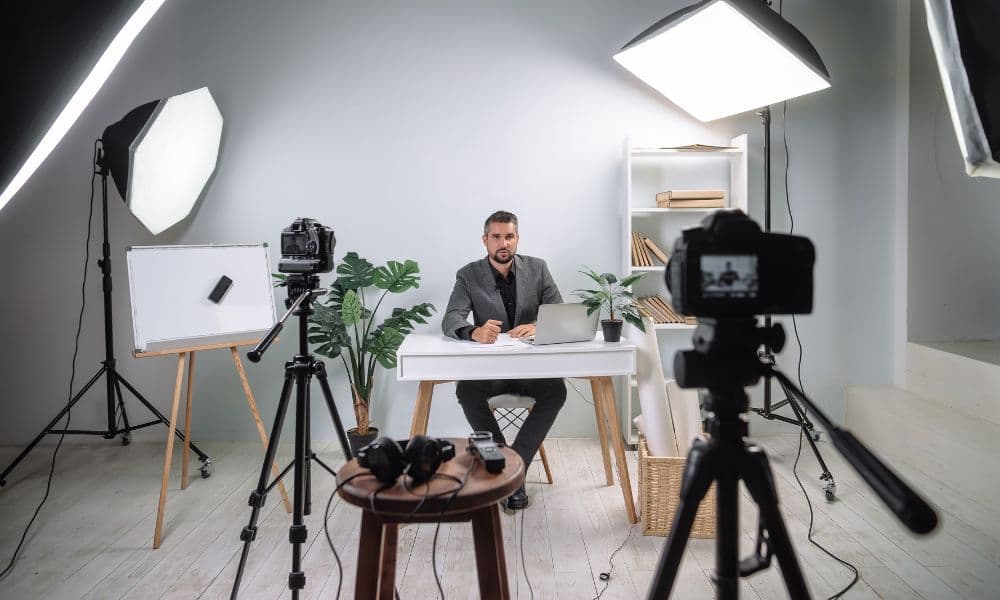You likely well know that remote communication has become a cornerstone of business operations, educational delivery, and creative collaboration. And so, the quality of your video conferencing setup directly impacts how you’re perceived by colleagues, clients, and audiences.
A polished, professional appearance doesn’t just enhance credibility—it ensures your message comes through clearly without technical distractions.
Whether you’re conducting important business meetings, delivering virtual presentations, or participating in hybrid learning environments, investing in quality video production products for enhanced video conferencing capabilities delivers immediate returns on both professional impression and communication effectiveness.
Why Video Conferencing Quality Matters More Than Ever
The shift toward remote and hybrid work environments has permanently elevated the importance of professional video presence. Research consistently shows that over 90% of communication cues are non-verbal, making high-quality video essential for effective remote interaction.
When your audio cuts out, your lighting casts unflattering shadows, or your background appears cluttered and distracting, your audience’s attention shifts from your content to your technical limitations.
Professional-grade video conferencing setups are no longer luxuries reserved for broadcast studios; they’ve become essential tools for anyone who communicates virtually.
The good news? You don’t need a full production team or high-end studio to look professional.
By focusing on three key areas—preparation, equipment quality, and lighting optimization—you can dramatically improve your virtual presence with strategic enhancements to your current setup.

Tip 1: Plan & Test Your Setup in Advance
Nothing undermines professionalism faster than technical difficulties at the start of an important virtual meeting. Thorough preparation eliminates these distractions and instills confidence in both you and your audience.
Comprehensive Pre-Meeting Checklist
- Camera positioning and framing: Your camera should be at or slightly above eye level, capturing you from mid-chest up with your eyes in the upper third of the frame. This framing mimics broadcast news conventions.
- Audio clarity verification: Test your microphone in the actual environment you’ll use. Check for echo, distortion, or ambient noise that might require adjustments.
- Internet stability confirmation: Run a bandwidth test 30 minutes prior to the meeting. Consider a backup hotspot for critical sessions.
- Platform proficiency: Ensure you’re comfortable using all necessary features on your platform (screen sharing, recording, breakout rooms, etc.).
- Lighting and background check: Review lighting conditions and background elements at the same time of day your meeting is scheduled.
Creating Technical Redundancy
Professional setups have backups for every mission-critical function:
- Keep a secondary microphone on hand
- Prepare an alternative lighting source (ring light, LED panel)
- Maintain a charged mobile device for backup video or hotspot needs
- Store important presentation materials in the cloud and local locations
Reliability Through Professional Equipment
Ikan’s catalog of live-streaming equipment offers reliable signal flow and allows professional camera systems to be used for video conferencing. For turnkey convenience, Ikan’s teleconferencing kits combine compatible components to reduce setup complexity and eliminate guesswork.
Tip 2: Upgrade Your Audio and Video Quality
Built-in laptop mics and webcams are convenient but rarely produce professional results. Purpose-built upgrades offer immediate and noticeable improvements.
Professional Audio Solutions
Why audio matters most: Poor sound quality causes distraction, fatigue, and miscommunication.
Upgrade recommendations:
- External USB microphones (e.g., Ikan Professional Desktop Mic) provide fuller, more natural sound and better background noise rejection.
- Lavalier microphones offer freedom of movement while maintaining clear audio.
- Acoustic treatments like soft furnishings or foam panels reduce echo.
- Monitoring tools: Use headphones to catch audio issues in real-time.
Camera and Video Enhancements
Why visuals matter: Video quality communicates professionalism and credibility instantly.
Upgrade recommendations:
- External webcams with optical zoom allow precise framing without resolution loss
- 1080p resolution at 30–60fps is ideal for sharp, smooth video
- Signal processors like the CV600 improve color, clarity, and stability
- Dedicated visual environment: Use a consistent, clutter-free background
Ikan’s Home Broadcasting Bundle combines video and audio tools for a professional-grade setup with minimal technical friction.
Tip 3: Optimize Your Lighting and Background
Lighting dramatically affects how you appear on camera. Even modest lighting improvements can make basic gear look high-end.
Three-Point Lighting Configuration
A traditional broadcast standard:
- Key Light: Main source, placed at a 45-degree angle. Ikan’s Onyx Aluminum Series is ideal here.
- Fill Light: Softer light on the opposite side, reducing shadows.
- Back Light (Hair Light): Adds depth and separates you from the background.
For simpler setups, the Oryon LED Ring Light Kit offers flattering, uniform lighting in a compact form.
Background Considerations
Keep it clean and intentional.
- Depth: Avoid sitting directly against a wall; create spatial separation
- Organization: Remove clutter and maintain visual simplicity
- Branding: Subtle logos or company colors reinforce identity
- Green screen: Ikan’s Green Screen System enables high-quality virtual backgrounds without edge blur
Lighting Pitfalls and How to Solve Them
- Mixed color temperatures: Match daylight and artificial sources with bi-color LED panels like the IB508-v2
- Backlighting from windows: Reposition or add front lighting to avoid silhouettes
- Screen glare: Reduce monitor brightness and use diffused light
- Missing catch lights: Position a small light just above the camera for engaging eyes
Conclusion: Elevating Your Virtual Presence
The difference between amateur and professional virtual presence comes down to three pillars:
- Preparation
- Purpose-built equipment
- Proper lighting and visual design
By addressing each area, you present yourself with confidence, clarity, and credibility. These improvements require minimal technical knowledge but yield a major impact on how your communication is received.
Visit our Home Broadcasting Equipment and Audio Accessories pages to explore our video conferencing solutions, or contact our team for custom setup support.
